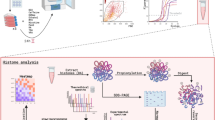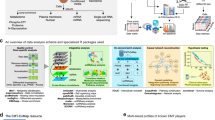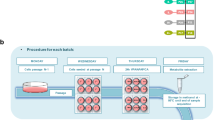Abstract
THE fact that emetine exerts a powerful toxic action upon E. histolytica, in vivo and in vitro, has long been established1,2. The mechanism of this action, however, is far from clear3. Furthermore, the end-point of toxicity of emetine to E. histolytica is variable in vitro, depending upon such factors as the nature and reaction of the medium, time of observation, and composition of the bacterial flora which necessarily accompanies the growth of the amæba in culture2,4.
This is a preview of subscription content, access via your institution
Access options
Subscribe to this journal
Receive 51 print issues and online access
$199.00 per year
only $3.90 per issue
Buy this article
- Purchase on SpringerLink
- Instant access to full article PDF
Prices may be subject to local taxes which are calculated during checkout
Similar content being viewed by others
References
Vedder, E. B., J. Amer. Med. Assoc., 62, 501 (1914).
Dobell, C., and Laidlaw, P. P., Parasitology, 18, 206 (1926).
Dobell, C., Ann. Soc. Beige Méd. Trap., Supp., 27, 201 (1947).
St. John, J. H., Amer. J. Hyg., 18, 414 (1933).
Author information
Authors and Affiliations
Rights and permissions
About this article
Cite this article
STEWART, G. Nature of the Action of Emetine upon Entamæba histolytica. Nature 163, 842 (1949). https://doi.org/10.1038/163842a0
Issue date:
DOI: https://doi.org/10.1038/163842a0



